
bolewts58
-
Posts
598 -
Joined
-
Last visited
-
Days Won
9
Content Type
Profiles
Forums
Blogs
Gallery
Events
Store
Posts posted by bolewts58
-
-
It is the White Russian Order of St. Anne with Swords 1st class given to him by Count Bermondt-Avalov for his Freikorp's breakthrough and relief of the Eiserne Division/West Russian Volunteer Army (Russische Westarmee) which was surrounded by Latvian troops in November 1919 during the Baltic Campaign. Sturmabteilung Rossbach force marched 1200 miles from Berlin to Thorensburg, Latvia to save the Eiserne Division/West Russian Volunteer Army from certain destruction.
2 -
-
Alex
Very nicely done. The Thais would certainly like those.
Rama VI was more British than the British. I believe he went to Eton and some of his brothers went to Harrow. His orders and decorations along with those of Rama V and Rama IV are on display at the Grand Palace in Bangkok. They also had a whole rack of Imperial German and Russian Orders. The showcases fill a room.
0 -
5 hours ago, The Prussian said:
Hello!
That's very interesting! I don't know anything about uniforms or military in general in that area.
It was very helpful! Thanks a lot!
I'm sorry to have gone a little off topic. But, here are a couple of photos just to show what I mean about the British influence on Thai uniforms. 1st Royal Thai Guard Regt. and 1st Royal Thai Cavalry Regt.
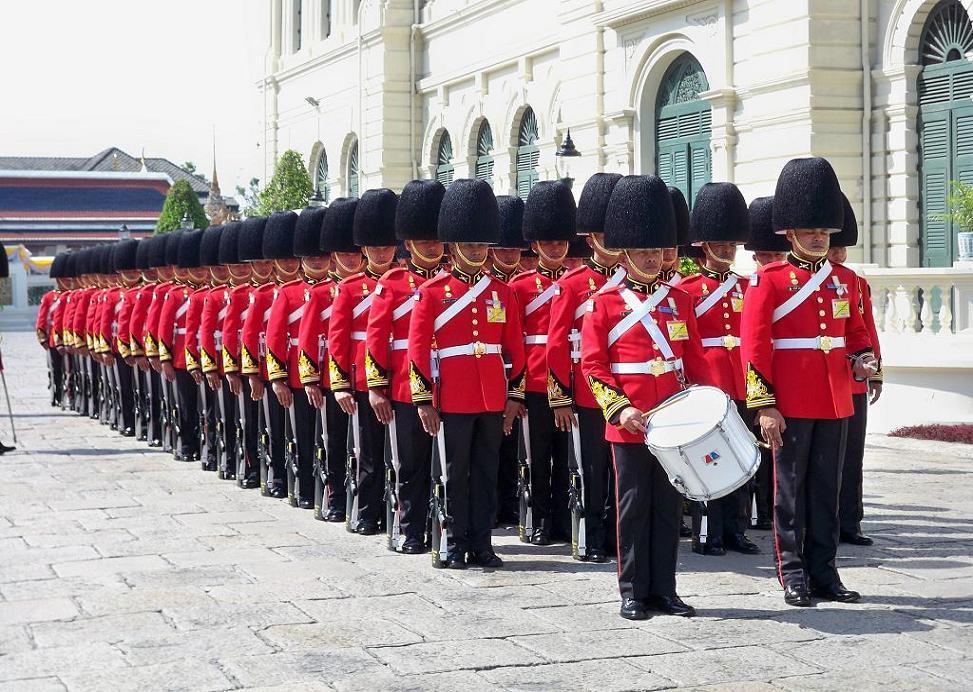
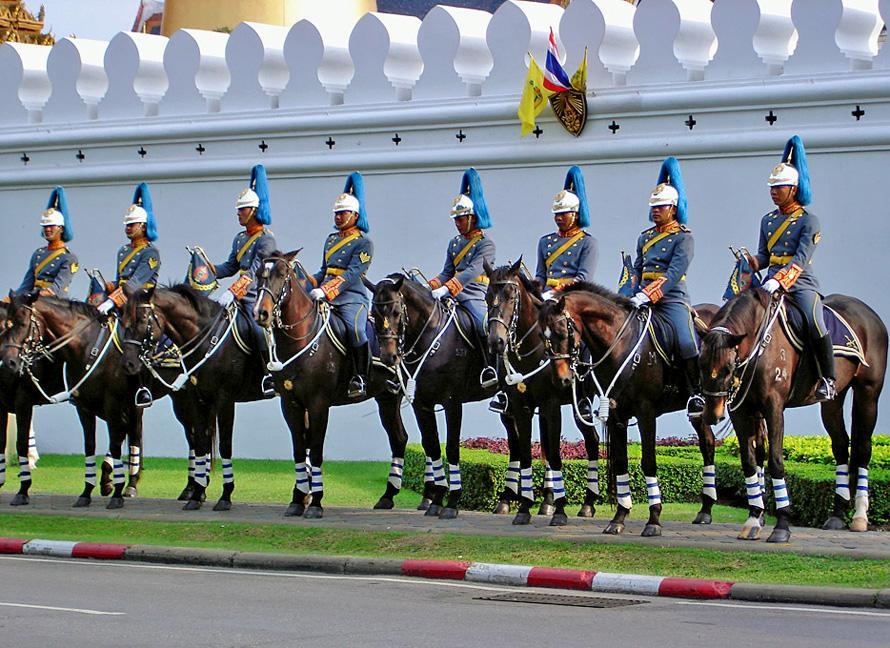
A 1915 photo of King Rama VI (Vajiravudh) looking every bit the British Field Marshal with Queen Suvadhana. (As an aside, I worked for his daughter, Princess Benjaratana from 2005-2006 and received her 80th Birthday Commemorative Badge for service - strictly a case of being in the right placed at the right time. ;-D)
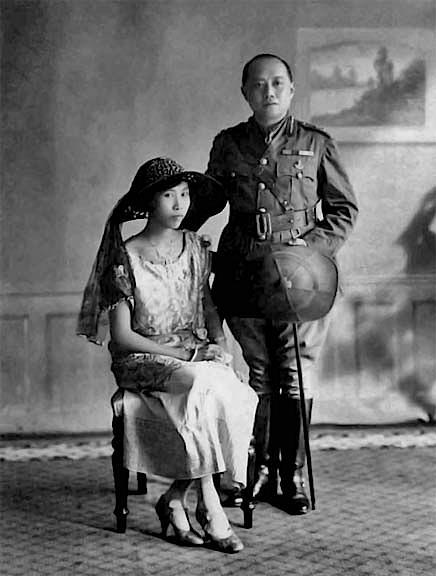
Prince Chakrabongse, one of the sons of King Rama V (Chulalongkorn) and brother to King Rama VI (Vajiravudh) in the uniform of a Russian Hussar in 1906. He was an ADC and Imperial page to Tsar Nicholas II. He married a member of the Russian nobility. An oddball bit of info is that his great grandson is a rapper in New York signed to JayZ's record label.
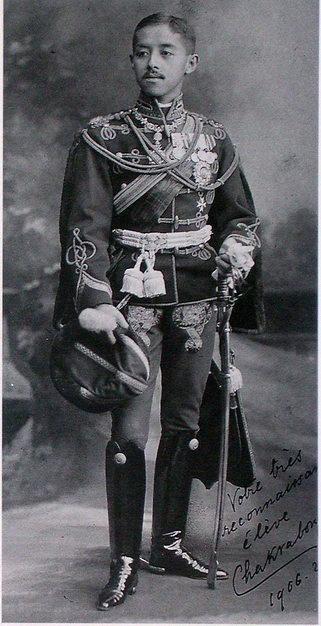 2
2 -
1 hour ago, The Prussian said:
bolewts58
Thanks a lot for your explanation!
That really makes sense! Do you know any books about Chinese ( or asian in general) uniforms during that era (if possible in english language)?
I'm sorry I don't know off hand any books as it's really not an area of interest to me. I do know just from living here for the last 25 years that for the most part, the Siamese/Thais adopted British military uniforms in the 1890s as King Rama V (Chulalongkorn) became an avid Anglophile after his visit in 1897. He sent his sons to Eton, had his wives adopt British dress and hairstyles and introduced British school uniforms (still worn today). The dress uniforms still worn by the Thai military today are a direct influence from Britain. The Thai Royal Guard Regiments mirror very closely those of Great Britain. Except, because of the climate, the busby was replaced by a pith helmet with domed plume covering that mimics the British bearskin. The Thai Royal Household Cavalry dress very similarly to the British Household Cavalry with very similar style uniforms and plumed helmets (but no cuirass because of the heat).
I think the same is true of countries that are former British colonies. The Indian, Pakistani, Sri Lankan, Malaysian and Burmese (Myanmar) retained British style uniforms after independence. I encountered an Indian Sgt-Major on a trip to Kashmir in 1996 who was a very "pukka" British-style NCO complete with handlebar mustache, swagger stick, British style beret and overall demeanor. He would have been quite at home on any parade ground in the UK.
6 minutes ago, bolewts58 said:1 -
11 hours ago, dedehansen said:
Hi,
I believe it is a prince from Siam.
Kind regards
Andreas
Not one of the Princes of Siam. That's not the Siamese Royal crest on the helmet. It the Imperial Chinese double-dragon insignia. My guess would be a member of the Chinese Imperial family attached to a Garde Cuirassier Regt. for training. Pre-1900 before all the trouble started in China. Perhaps he is one of Emperor Daoguang's 7 sons, born during the last quarter of the 19th century. The Chinese had a very large extended royal family with lots of minor princes.
1 -
You made the right decision. Ironically, these fakes originated in Poland. Hence the Polish dealer.
0 -
On 05/07/2021 at 18:35, BlackcowboyBS said:
well the word "allezeit" seems wrong to me, I am not 100 % sure, if the spelling has changed in the last 100 years but todays correct spelling would be "allzeit" So I would also say, this is pure fantasy and a modern piece.
Yes, technically you're correct. You see contemporary regimental and veteran crosses with the contraction of "Alle Zeit" to Allzeit" Bereit (Alway Ready or Ready All the Time). "Alle Zeit" as two words is grammatically correct, but as one word, as written on this cross, not correct. The "e" in Alle should be dropped. If two words, "Zeit" being a noun should always have a capital "Z" at the beginning.
Grammar and spelling are often what trip up fakers.
0 -
I don't care if it's cast or not. I don't want to be rude. But, you're typical of collectors who make a mistake, won't admit it and turn themselves inside trying to prove they're right, while denying the facts. Please accept the truth. THIS CROSS NEVER EXISTED UNTIL A FEW YEARS AGO. It is an invention and nothing more.
The resident expert/collector of Weimar era veteran awards, especially obscure awards, Eric Stahlhut has to my knowledge never shown this cross. I would think, if it was genuine, he would have long ago acquired one for his collection and shown it here. I'd be interested in his opinion on this.
2 -
I've been collecting for 60+ years and never saw this cross until during the last few years. I've never seen it in any reference books or archives. There simply is no documentation of which I'm aware of this cross. Also, it is absolutely not Freikorps.
While there are some very minor differences between your cross and the ones that Porre81 sells all the time and yours appears to be of slightly better quality, I am 100% sure they both come from the same source. I am also 100% sure that it's a made up award that never actually existed contemporary to the 1920s and onward. It's unfortunate it's not a legitimate award because it is rather attractive.
0 -
Yes. A fantasy sold by that crook Porre81 (his name is Marc Poredda). I'm sorry to say that he won't give you your money back either. I have complained about him repeatedly to eBay because he is one of the biggest crooks on there. But, they don't care.
0 -
-
18 hours ago, Oberland said:
I thought I have read somewhere the whole 1. Bataillon was Teja. But this is daccord with the memoirs of Mr. Weber
No. It is as I said. 1. Kompanie. 1 Btl. Hans Weber was a great myth-maker as one of the last surviving original Oberlanders. I would take a lot of what he wrote with a grain of salt.
0 -
-
Thank you for your help.
Fortunately, someone on WAF filled in the blanks for me. Here's the info for anyone who's curious.
31.5.1920
Oberjäger Stier gehörte seit dem 9.12.18 dem
untenstehendem Truppenteil an und wurde am
31.3.20 in Ehren aus dem Reichswehrdienst
nach […] entlassen.
Bez.Kdo. [= Bezirkskommando] Stockach / Ba. [= Baden]
Oberj. Stier ist berechtigt, seine Reichswehrab-
zeichen in Zivil weiterzutragen.
Geeignet zur Verwendung in der Reichswehr.
Ärztlich untersucht und für gesund befunden.
M. 50 Entlassungsgeld und M. 550,- Treueprämie.
1 Entlassungsanzug mitbekommen.
Infolge Heeresverminderung entlassen.
Vereidigt:
6.11.19.
[signed]
MüllerHauptm. u. Komp.F. [= Hauptmann und Kompanieführer]
[sealed]
z.Zt. [zur Zeit] Frankfurt M [= Frankfurt am Main]
Bonames."
["31/5/1920
Oberjäger Stier had been a member of the unit mentioned below since 9/12/18 and was honorably discharged from Reichswehr service to [...] on 31/3/20.
District Command Stockach / Baden
Oberj. Stier is authorized to continue wearing his Reichswehr badges with civilian dress.
Suitable for service in the Reichswehr.
Medically examined and found to be healthy.
50 Marks discharge payment and 550 Marks faithful service bonus.
Issued 1 discharge uniform.
Discharged due to downsizing of the army.
Sworn in:
6/11/19.
[signed]
MüllerHauptmann and acting company commander
[sealed]
presently at Frankfurt am Main/Bonames"]I have his military pass and here is the summary of his service.
Unteroffizier Alfred Stier served mainly on the Western front all of 1917-1918. Although for a time in late 1917 he was on the Eastern front as it says in his battle list that he was there when the truce and armistice was declared as a result of the Bolshevik Revolution, I presume. He was wounded or at least ill at some point in early 1918 as he was in hospital in April and May 1918 and got the EKII on April 30, 1918. He was back on the Western Front until Nov 11, 1918 finishing up in the 2. Garde Regt. He then immediately continued with the Garde Regt. with the rank of Oberjäger, when it became 1. Garde-Landesschützen-Abteilung, Detachement von Neufville on Dec. 9, 1918. He was with Detachment von Neufville right through to May 31, 1920, by which time it was part of Reichswehr-Brigade 25. So, he would have been involved in all the Freikorps von Neufville actions right from the beginning (the the battle with and suppression of the workers 'and soldiers' council in Frankfurt am Main in 1919 and support for the Ehrhardt-Brigade during the Kapp Putsch in Berlin in April 1920 etc.) As the page that I attached says, he was discharged because of downsizing of the army. Given his long service, he would have been entitled to the Freikorps von Neufville Treukreuz, either on ribbon or the pinback cross.
The Freikorps connection, particularly with Detachment von Neufville and his long service in that Freikorps is what makes this pass. Otherwise, it's fairly standard.
0 -
I am having trouble with some of the Kurrentschrift on this page and would really appreciate some help. I understand there's a reference to "Reichswehrdienst" and the wearing of a "Reichswehrabzeichen" (in the red box). But, I need a more precise translation of the page.
Thanks.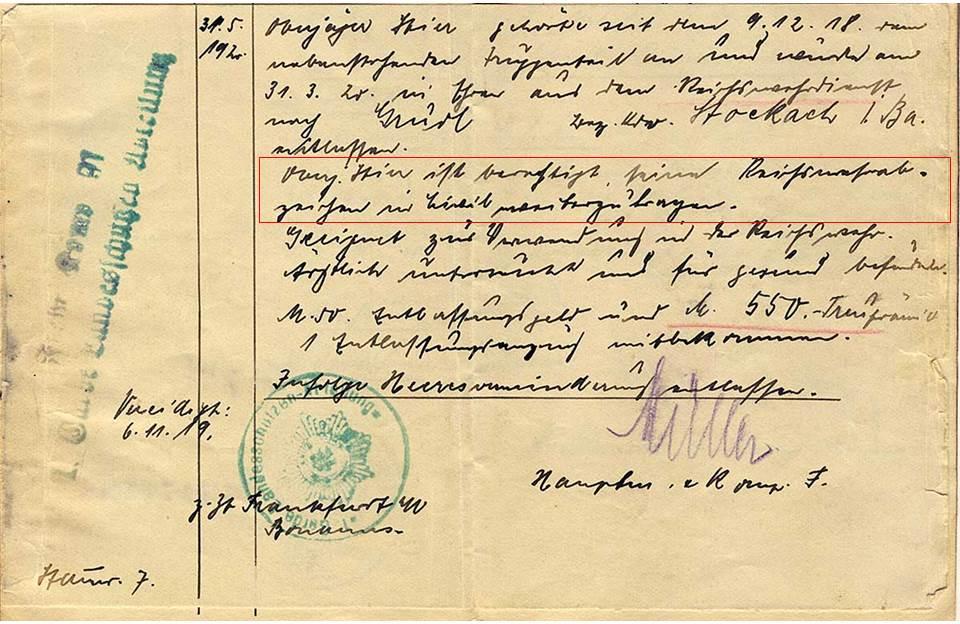 0
0 -
I know. You've already shown it before. That's one of the 4 regular companies in Freikorps Oberland. But, that's not Sturmbataillon Teja, which was a special assault unit within Freikorps Oberland. Unless you have something that specifically says your grandfather was in the assault batallion, then he was just a regular Freikorps Oberland member. Did he receive Die Gedenkmünze für Oberschlesien or Der Adler des Sturmzuges? Both of these awards were for the Sturmbataillon Teja only.
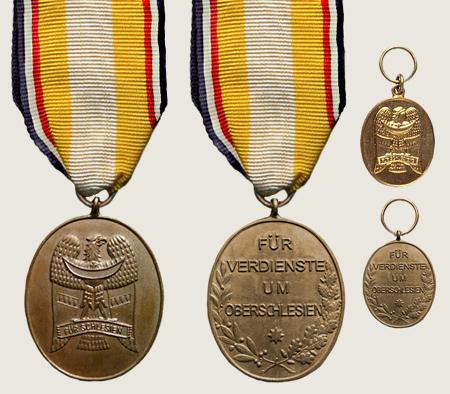
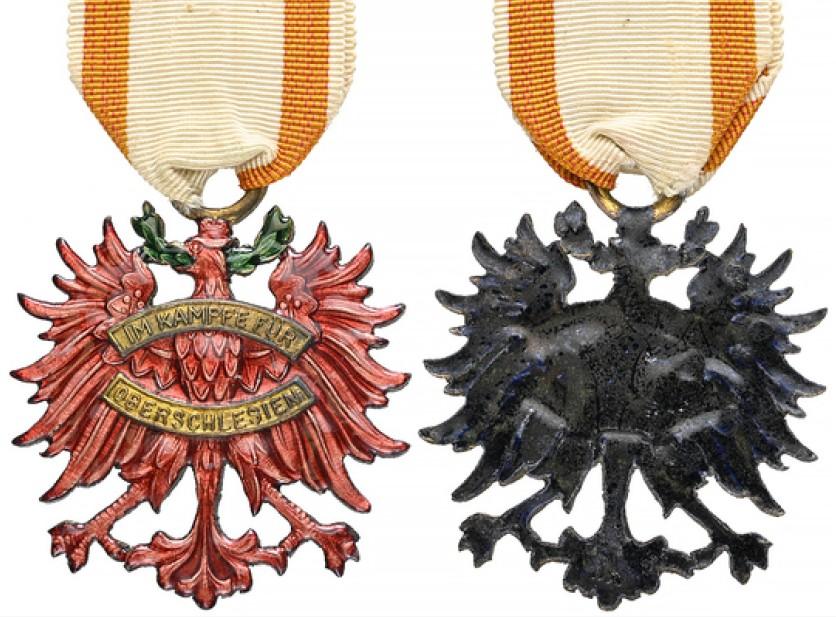 0
0 -
-
On 08/05/2021 at 01:48, TheMadBaron said:
Is it possible that these are Bayernwacht members? The reverse has a Nürnberg studio mark.
It's very possible. Bayernwacht used an armband like this and their logo was printed on it rather than having the metal oval badge with the lion often seen.
Also, the uniform is nothing a Freikorps or Einwohnerwehr would have worn. It's very typical of paramilitary uniforms from after the Freikorps period in the later 1920s and early 30s.
1 -
I think your reaction is out of line and childish to say the least. Simius Rex was being very respectful and only trying to help. Is it really "too inaccessible, too elitist and too semantic" to try to be historically accurate? That is the raison d'etre for forums like this to exist. You obviously showed this bar hoping for a fawning "ooh, aah" reaction from other members. When you didn't get it and your lack of basic knowledge was quickly exposed, you made the absolutely inane and silly response of "I collect medals, not ribbons". (What medal collector doesn't collect ribbons?). If you're intent on leaving the forum after only 41 posts because you can't accept the truth, while unfortunate, it's no great loss to any of us. Obviously, based on your reaction, you're not interested in history but only in accumulating shiny things like some magpie.
6 -
The ribbon bar likely means 2nd class.
BTW. I have my doubts about that eMedals grouping being anything but cobbled together. The ribbon bar doesn't have a Silesian Eagle on it and you don't often get Freikorps who served both in the Russian Westarmee in the Baltic as the ribbon bar indicates and in Silesia. The Russian George Cross is not typical of the German-made types normally worn by German recipients. I also believe the black enameled Maltese Cross which I assume is supposed to be the "Dienstgrade" badge is even Freikorps. I'd need to see the back.
0 -
Although I don't have as much of a presence on this forum as I do on WAF, I still thought I would post this here too.
I have decided to sell my Freikorps collection over the next year. It will be a slow process as I will sell only a few pieces every month as I still want to enjoy it for awhile. I will continue to post on GMIC, WAF, Feldgrau and other forums. But, eventually I will be leaving the hobby and all forums. It's partly due to my age (I'm nearly 70) and health and the impact of Covid (my income dropped by a 1/3 last year). I'd rather enjoy the money while I can. I'm not disappearing yet. But, I thought I'd post this just to let everyone know, especially those who are not usually present on WAF.
0 -
Sorry, it's a well-known fake.
Notice the ripples in the sail on yours. That's called "Luffing" in sailing. An old sea-dog like Ehrhardt would never have allowed the badge to have "Luffing", if for no other reason than it would indicate that the ship was crossing the wind and slowing down. The Viking ship is in full sail cutting through the waves which would not be possible with a "Luffing" sail. Whoever cut the die for this fake did not understand the fundamentals of sailing and obviously didn't examine real badges. That's a dead give-away that it's fake as well as several other details that are wrong.
Here's an original with a Prinzen size. Notice the full sail with no ripples on the surface, rounded and full of wind as it should be.
0 -
5 hours ago, Simius Rex said:
Definitely a post-1945 cross. The die-hard Freikorps collectors refer to this item as the Schwarzes Armeekreuz der freiwilligen Deutsch-Russischen Westarmee. It is an extremely scarce piece and originals rarely come-up for sale. The originals I've seen have a more substantial frame around the enameling.
You're actually confusing the crosses somewhat. The one you're showing here is called Der Abzeichen für Dienstgrade der russische Westarmee (Badge for All Ranks of the Russian Western Army) and was more of a unit service insignia rather than an award. It is sometimes referred to as the Avaloff Cross 3rd class, but in reality was a badge separate from the award crosses. This is the story behind this service grade cross.
By order no. 24 of March 4, 1919, Colonel Fürst Awaloff-Bermondt donated a badge in the form of a Maltese cross for the all military ranks of his volunteer troops. Colonel Potozki commander of Corps Graf Keller provided the draft of the award, which was intended to distinguish the members of his volunteer troops from other Baltic troops. The badge was based on the planned white Maltese cross of General Graf Keller's Russian White Army. However, as a sign of mourning (Count Keller was captured and shot in Kiev on December 20/21, 1918), the color was changed to black.
Here is my example of this service cross.
The cross that started the thread is called Der Awaloff-Kreuz der Freiwilligen Westrussischen
(Deutsch-Russischen) Befreiungsarmee (1919). Kreuz 2. Klasse ohne Schwerter. Here are two examples from the Peter Groch collection that are similar to the copy that started the thread. The one on the left, like the copy is a silvered cross with black enamel. The one on the right is a silvered cross with a black paint finish.1


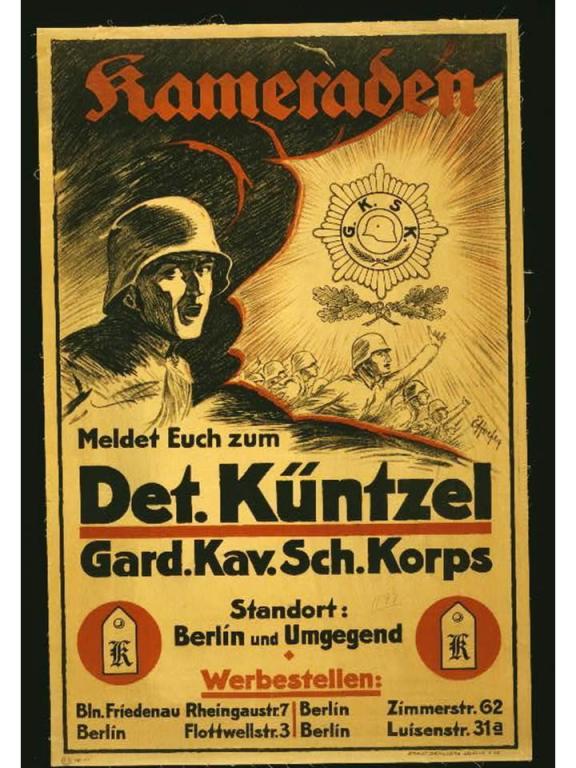
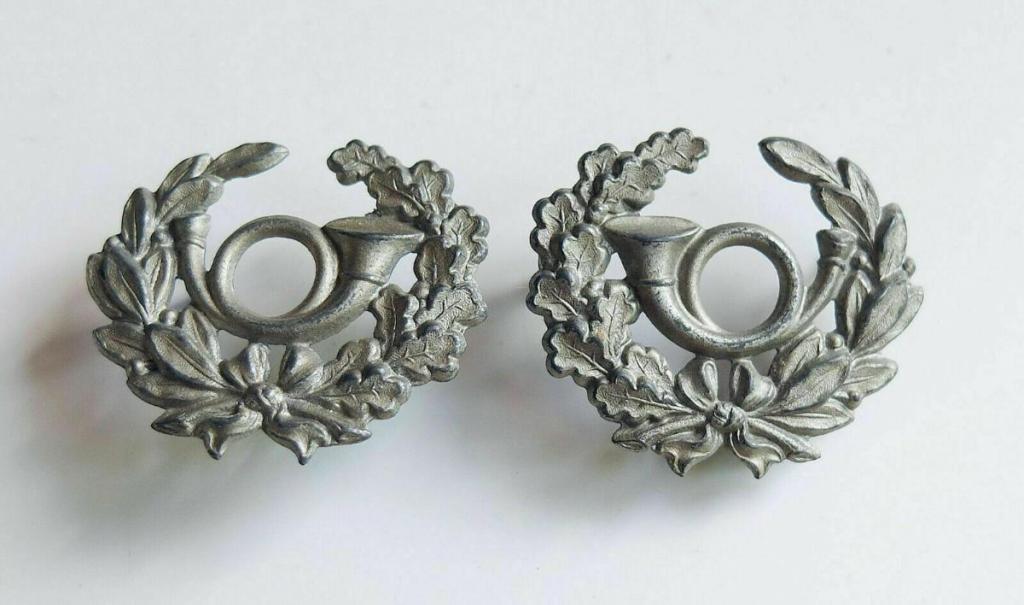
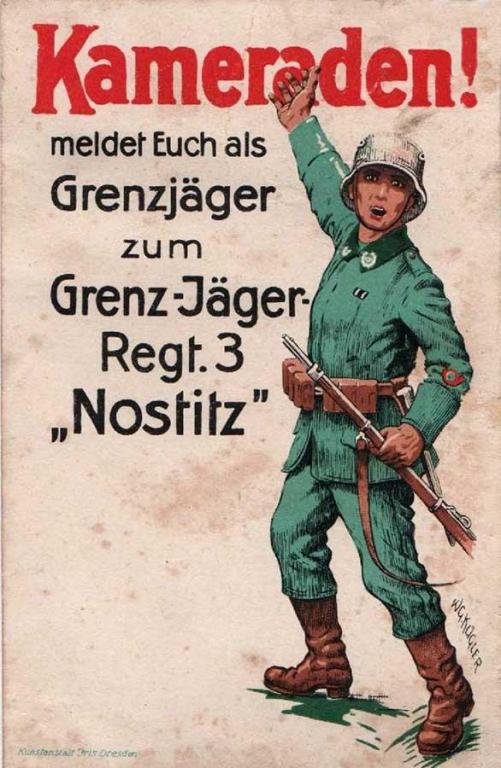
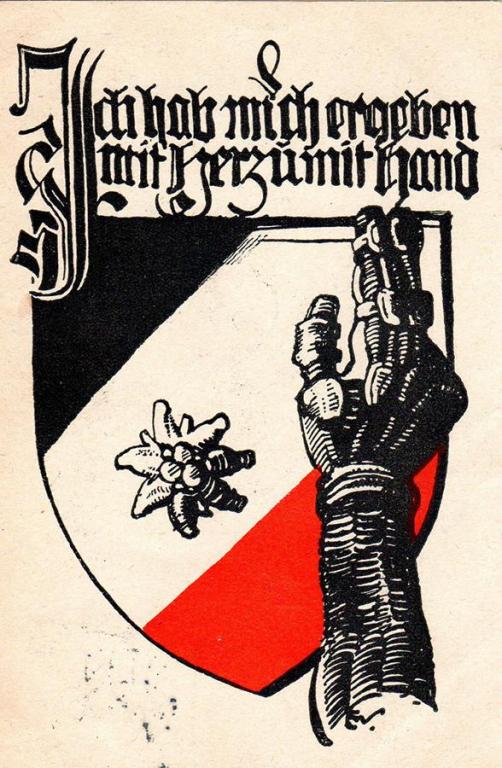
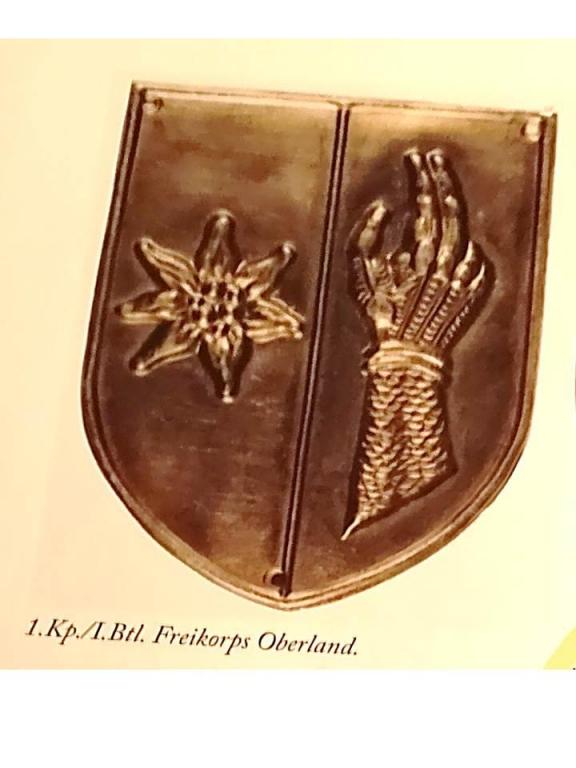
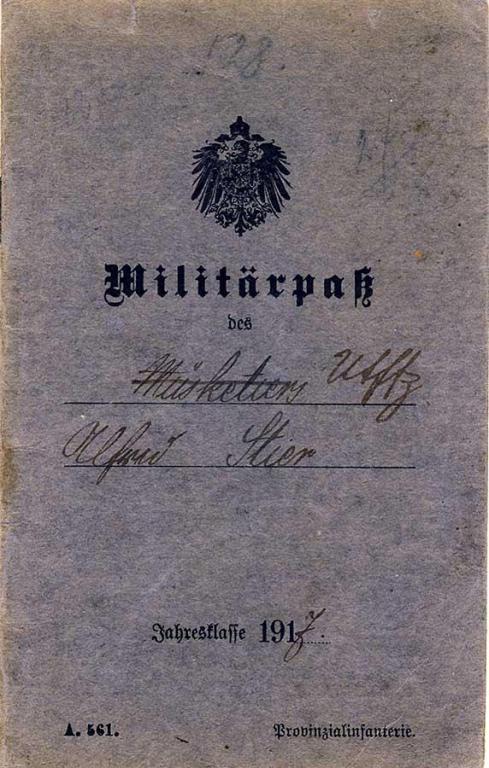
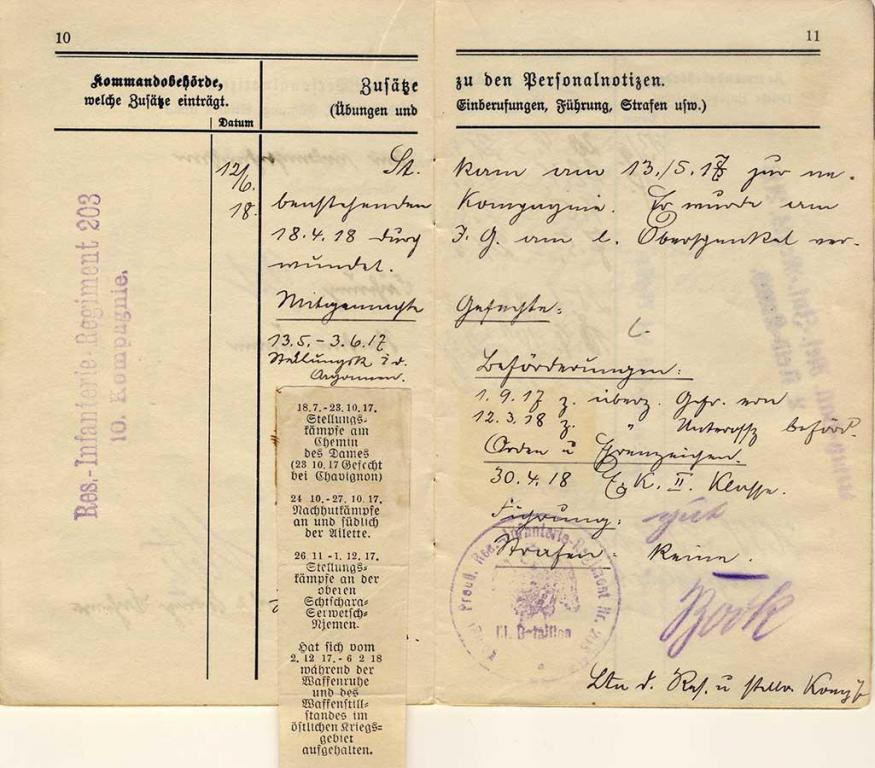
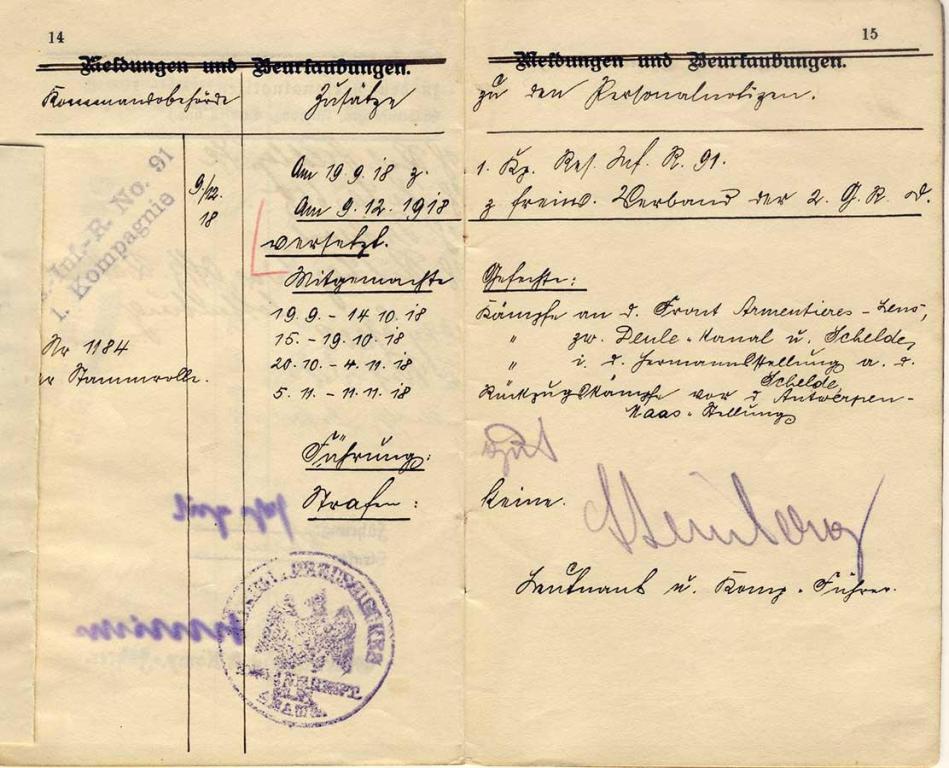
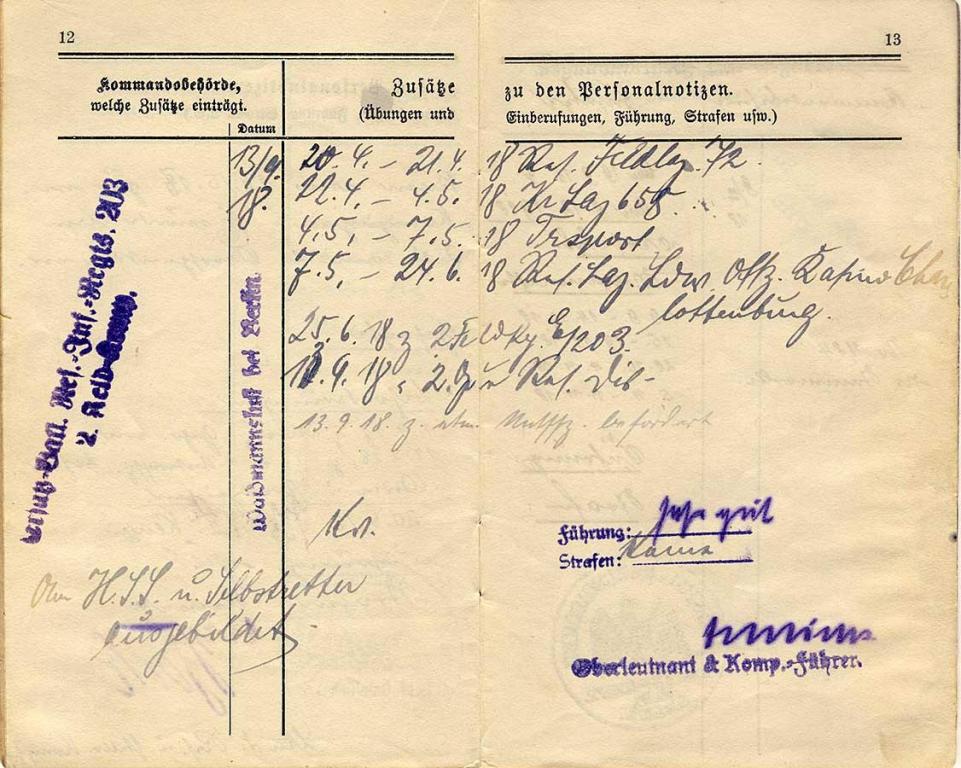
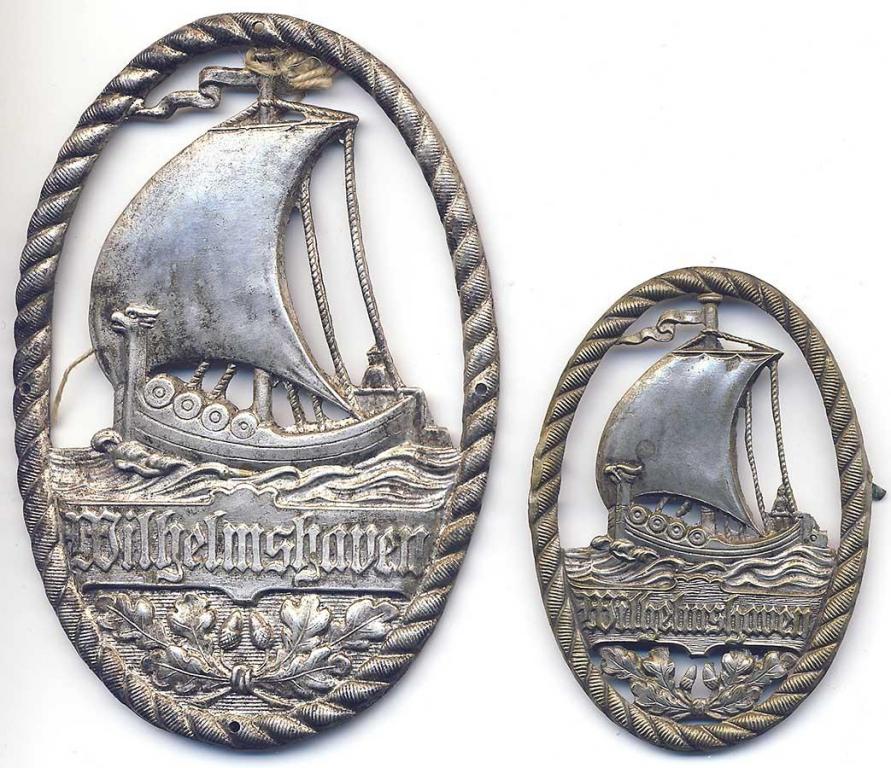
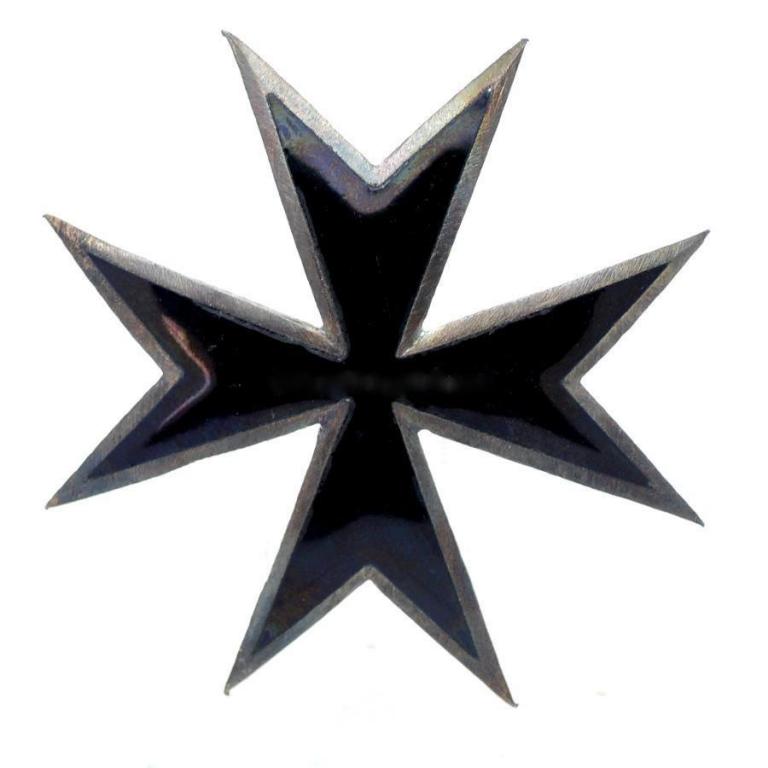
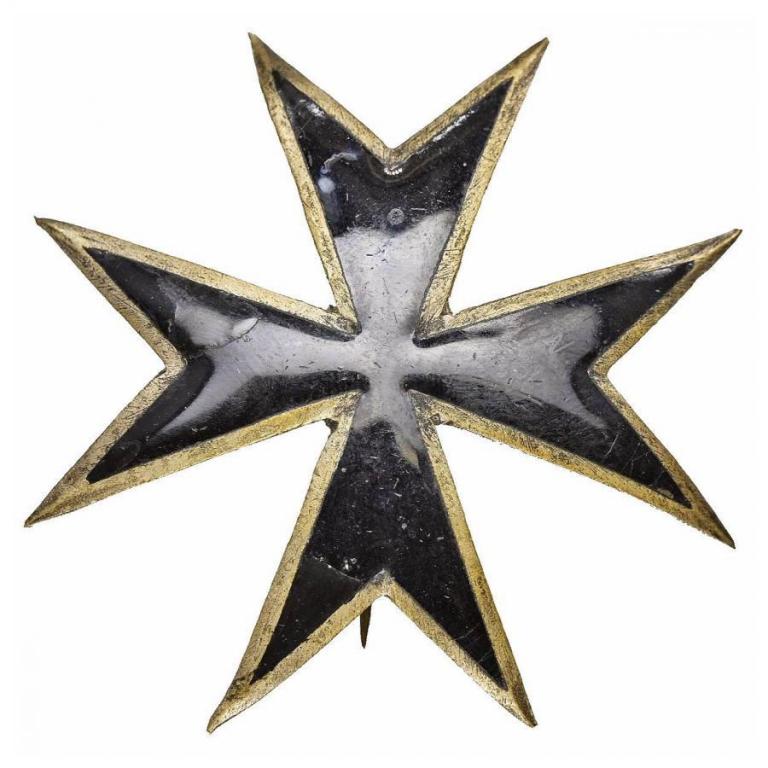
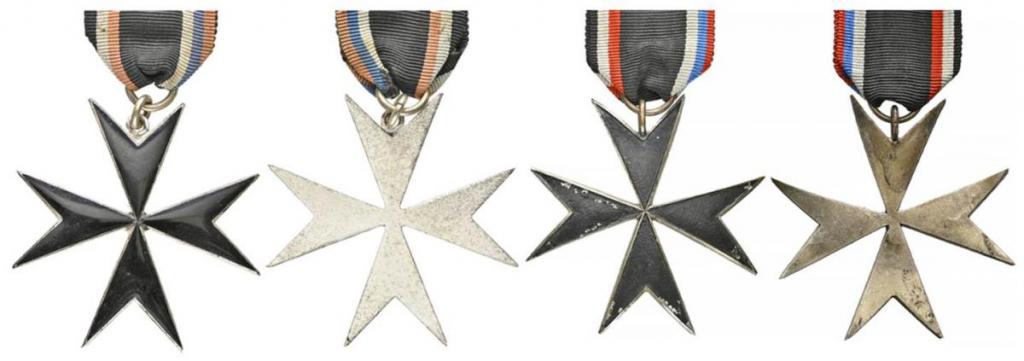
Alfred von Randow with his medal bar
in Germany: Weimar Republic & Deutsche Freikorps
Posted · Edited by bolewts58
True, only 1 class. But, it was more of an either/or rather than the ribbon bar version being "unofficial" because the award document actually mentions the ribbon color and the medal being suspended from it and basically gives it as an alternative option to wear.